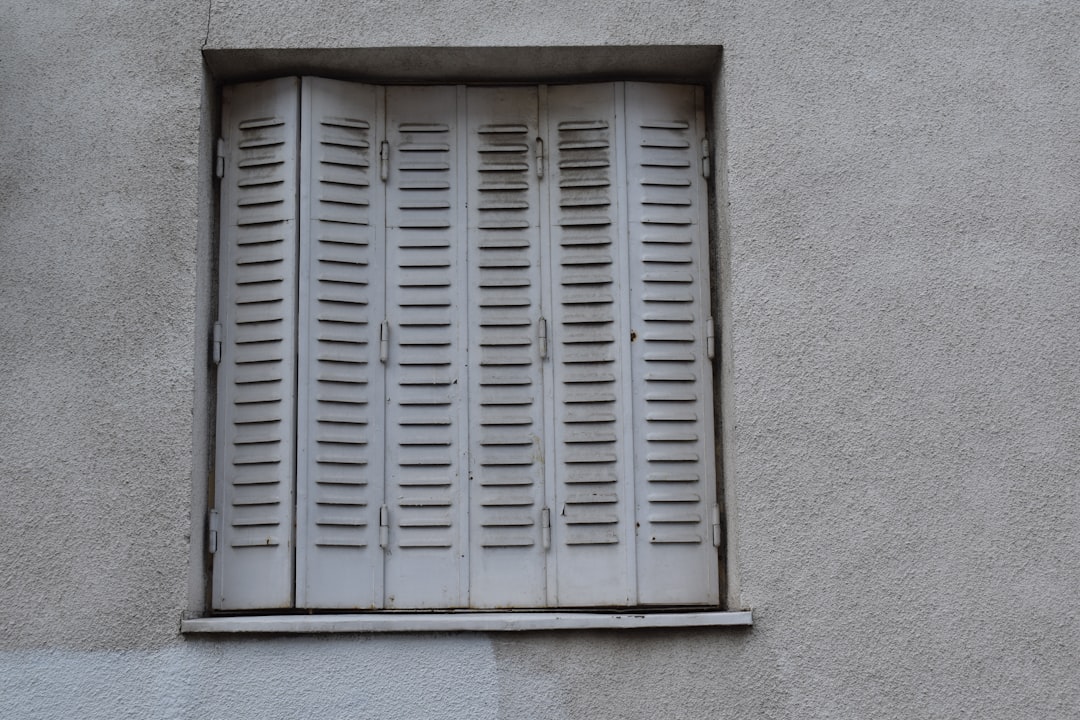

Engage prospects with a scan and streamline customer engagement with FREE QR code marketing tools by Sona – no strings attached!
Create a Free QR CodeFree consultation

No commitment

Engage prospects with a scan and streamline customer engagement with FREE QR code marketing tools by Sona – no strings attached!
Create a Free QR CodeFree consultation

No commitment
QR codes have quickly become a strategic tool for curtain alteration services, offering a streamlined way to increase customer reviews and facilitate direct communication. They give customers an effortless path to share their experience at the exact moment satisfaction is highest, without downloading an app or navigating complex processes. When a technician finishes a fitting or drops off altered drapes, a single scan can capture authentic feedback before the feeling fades with a Google reviews QR.
Traditionally, these businesses depended on printed brochures, physical feedback forms, and manual outreach to collect reviews. These methods often lead to low response rates, slow insights, and missed praise from satisfied clients. The gap between an excellent in-home experience and a public review is where valuable goodwill is frequently lost, especially when relying on brochures alone.
By integrating QR codes at key touchpoints such as installation visits, invoices, care tags, or in-store displays, curtain alteration services can make it remarkably simple for customers to leave reviews in real time. This approach increases review volume, surfaces actionable feedback, and ensures more potential clients see genuine testimonials that build trust. It also converts offline satisfaction into online proof, fueling search visibility and word-of-mouth growth.

Curtain alteration businesses often face the challenge of capturing feedback from delighted clients who intend to leave a review but forget once life gets busy. QR codes bridge the gap between excellent service and public advocacy by transforming everyday service moments into frictionless review opportunities. When integrated thoughtfully, they replace outdated analog processes and give your team a repeatable system that generates consistent results, as outlined in this QR marketing overview.
Start by identifying the points in your workflow where customers are already giving positive signals: post-installation walkthroughs, pickup counter conversations, or text confirmations that their order is ready. Place a code where it is most convenient to scan, tie it to a clear call to action, and ensure the experience after the scan is fast and friendly. With this foundation, QR codes can help you move from sporadic reviews to a steady stream.
Automation platforms like Sona QR help you manage codes, unify analytics, and sync data with your CRM. With the right tooling, you can trigger thank-you messages, route poor feedback to support, and keep a continuous improvement loop running in the background.

A major hurdle for curtain alteration services is converting in-home delight into visible online reputation. Clients often say everything looks perfect as the installer leaves, yet hours later the moment has passed. QR codes remove the distance between that peak moment and the act of leaving a review. A quick scan is faster than finding a business profile manually, and far more effective than sending a review link days later.
QR codes also make the offline-to-online journey measurable. Printed materials like thank-you cards or care tags usually tell you nothing about performance. With QR codes, you gain real-time insights into what worked, where it worked, and who engaged. This sharpens your marketing and operational decisions and turns every job into a source of learning, enabling clearer pipeline impact.
Embed QR codes across the service experience: from thank-you notes tucked into finished drapery bags to quality guarantees attached to the hem. Each touchpoint becomes a measurable path that supports reviews, referrals, and repeat business, especially on items like care tags and labels using stickers and labels.

Curtain alteration teams need formats that fit how clients interact with their brand: quick scans in homes, at pickup counters, and inside care guides. Choosing the right QR code format for each moment ensures customers have a smooth, satisfying experience and your team gets the data needed to improve.
Dynamic codes are often the best default since you can update destinations, add tracking parameters, and run A/B tests without reprinting. Static codes have a place for long-term assets where the link will never change, such as a permanent care guide on your website. Use both strategically to keep costs low and agility high.
Centralize QR generation and management with a platform like Sona QR. You can create all formats in one place, set up tracking parameters, and manage destinations for each campaign or team member without manual juggling.

Many curtain alteration services complete flawless projects but fail to convert that success into ongoing review growth because requests arrive late or appear in the wrong channel. The key is to place QR codes where customers naturally pause and reflect on the service, then make scanning the easiest possible action.
Think through the customer journey from first contact to long-term care. Each stage offers a moment to request feedback, promote referrals, or encourage a follow-up booking. When you map codes to these moments, you turn isolated jobs into a compounding stream of social proof.
Align your code placements with the natural rhythm of customer interactions. The right timing and context can double or triple engagement compared to generic follow-ups sent days later.
Applying QR codes across the client journey helps you gather reviews, reduce follow-up friction, and encourage repeat business. Start with the use cases that fit your current volume and team structure, then expand as you see results.
Each use case can be tracked separately so you can see which moments produce the most engagement and which need better CTAs or design tweaks.
Every scan contains useful context: who engaged, where they were, what prompted the scan, and what they did next. By deploying distinct QR codes at key stages, you build audience segments you can nurture with personalized messaging. Over time, this becomes a data-driven retargeting engine that turns one-time customers into lifetime clients. See Sona’s intent retargeting playbook.
For curtain alteration services, audience distinctions often revolve around project stage and intent. Someone scanning a code on a fitting checklist is likely near completion and primed for a review. A person scanning a quote card is in consideration mode and may need inspiration or pricing guidance. Use these signals to match your follow-ups to the moment.
Platforms like Sona QR make segmentation automatic by storing attributes for every scan and allowing downstream tools to consume that data. This turns anonymous interactions into audience insights that power smarter marketing and service operations.
QR codes function as connectors that unify your offline presence with digital channels. They make print assets measurable, reduce friction in video and signage, and give you a common data thread across otherwise disconnected efforts. For curtain alteration services, this means you can finally see which shop posters, mailers, and installer cards are moving the needle.
Think of QR codes as the offline on-ramp to your digital funnel. Whether the journey starts with a walk-in customer admiring a window display or a homeowner reviewing a care tag, the scan ensures you capture the moment and guide the next step with a relevant destination.
With a centralized platform like Sona QR, you can manage codes across all channels, monitor performance, and sync scan data with your CRM. This connected approach reveals which combinations of media and messaging drive the most engagement and revenue.
A strong campaign starts with clarity about the goal and the audience, followed by smart design, disciplined deployment, and meticulous measurement. The steps below translate that philosophy into action for curtain alteration services. Use them to plan your first rollout or to refine your current approach for better results.
Before you begin, align your team on the primary outcome. If your target is more public reviews, focus your first campaign on post-service touchpoints. If your priority is booked consultations, shift attention to in-store and direct mail placements that capture prospects.
Start creating QR codes for free: Start creating QR codes for free
A brief weekly review of performance keeps your campaign sharp. Over time, you will build a library of proven placements and messages that your team can deploy across locations and seasons.
Offline actions are notoriously hard to measure. Without analytics, you can guess which posters or leave-behind cards are working, but you cannot prove it. QR code tracking fills that gap by turning every scan into a datapoint you can analyze and act on. For a service business where reputation drives bookings, this visibility is a decisive advantage.
The goal is not only to count scans but to understand engagement quality and business outcomes. When you see which placements yield more five-star reviews or more booked consultations, you can allocate budget, schedule staff, and design offers with confidence. This is where a data-forward platform pays for itself.
Sona QR captures real-world engagement, and Sona.com turns it into actionable insight. When you treat scans as the first step in a measurable funnel, QR codes become part of your performance marketing strategy rather than a novelty.
QR codes work best when they are specific, trackable, and promoted by your team. A handful of best practices can reliably increase scan rates and conversion, especially in a service environment where staff interactions matter.
Focus on clarity and convenience. Make sure every code is paired with a benefit-driven CTA, that the landing experience is streamlined, and that your staff understands how to invite customers to scan. Even small refinements can lead to big gains.
Centralized dashboards help you compare performance across materials and locations. Over a few cycles, you will have a playbook your team can execute consistently.

It helps to see how peers are using QR codes to collect reviews and streamline follow-ups. The examples below illustrate practical, low-lift tactics that any curtain alteration business can copy and expand.
Consider running small pilots to validate ideas, then scaling the winners. Track scan volume, review completion rate, and average rating before and after implementation to quantify improvements.
These tactics share common ingredients: clear benefit-led CTAs, strong placement, and simple post-scan experiences. With tracking in place, each becomes a repeatable lever for growth.
The difference between a QR program that fizzles out and one that compounds results often comes down to execution details. Design for scannability, pair every code with a compelling reason to scan, and remove friction after the scan. Train your team, measure relentlessly, and treat the program as an ongoing process rather than a one-time project.
Avoid the classic mistakes: codes that are too small to scan from normal distances, low contrast on patterned backgrounds, vague CTAs, and landing pages that require too many steps. A simple checklist and periodic audits can prevent most issues.
When authenticity and usability come first, customers are more likely to scan, share candid feedback, and recommend your business.
QR codes present curtain alteration services with a smart, effective way to connect in-person service excellence to a growing digital reputation. By solving the common problems of lost feedback and missed timing, you turn everyday client interactions into a steady flow of public praise and private insights. With clearer visibility into what works, you can refine placements and scripts and help your team shine.
Strategically positioned QR codes create a virtuous cycle of feedback and trust. More reviews improve search visibility, which brings in more clients, which creates more review opportunities. This momentum compounds over time and supports measurable marketing outcomes that lift the entire business.
Incorporating QR-powered review requests also lays the foundation for long-term customer loyalty. Each scan becomes a touchpoint you can track and learn from, while customers enjoy a seamless experience that respects their time. If you are ready to put this into practice, generate your first dynamic codes with Sona QR, connect them to your review destinations, and deploy them on installer cards and care guides. Start creating QR codes for free.
QR codes have transformed curtain alteration services from a simple transaction into a powerful tool for collecting valuable customer feedback and driving business growth. By seamlessly connecting customers to review platforms, QR codes enhance customer engagement, streamline the review process, and help you build a trusted reputation that attracts new clients. Imagine instantly capturing honest reviews right after service completion, allowing you to showcase your quality work and boost your credibility.
With Sona QR, you can create dynamic, trackable QR codes in seconds, update them anytime without reprinting, and monitor which customer interactions generate the most reviews. This means you can optimize your marketing efforts, improve service based on real feedback, and ultimately increase customer retention and referrals. Start for free with Sona QR today and turn every curtain alteration into an opportunity for glowing reviews and lasting growth.
While the article does not provide specific measuring instructions, it emphasizes that curtain alteration services include on-site installations and fittings where measurements are taken to ensure proper fit.
The process includes on-site installations and fittings, followed by technician visits where QR codes can be scanned to share feedback immediately after service.
The article does not specify locations but suggests that services often have in-store displays, installer badges, and direct customer interactions where QR codes facilitate communication and review collection.
The article does not provide details about costs related to curtain alterations.
Proper fit is ensured through professional on-site fittings and installations, during which technicians may use checklists and leave-behind cards to confirm satisfaction.
A key trend is the use of QR codes at multiple customer touchpoints to collect real-time reviews, streamline communication, and enhance marketing through measurable offline-to-online engagement.
Curtain alteration services include providing care guides and garment-style tags with QR codes linking to fabric-specific tips and maintenance instructions.
QR codes simplify leaving reviews, increase review volume, provide real-time feedback, track engagement, convert offline satisfaction into online proof, and enable data-driven marketing and customer retention.
Scheduling can be facilitated via QR codes linking to booking forms on appointment cards, pickup counters, or direct mailers, reducing phone traffic and making it convenient for customers to book consultations.
The article does not detail specific types of curtain alterations but highlights services like fittings, adjustments, and warranty or minor touch-up requests supported through QR-enabled forms.
Use Sona QR's trackable codes to improve customer acquisition and engagement today.
Create Your FREE Trackable QR Code in SecondsJoin results-focused teams combining Sona Platform automation with advanced Google Ads strategies to scale lead generation

Connect your existing CRM

Free Account Enrichment

No setup fees
No commitment required

Free consultation

Get a custom Google Ads roadmap for your business






Launch campaigns that generate qualified leads in 30 days or less.
